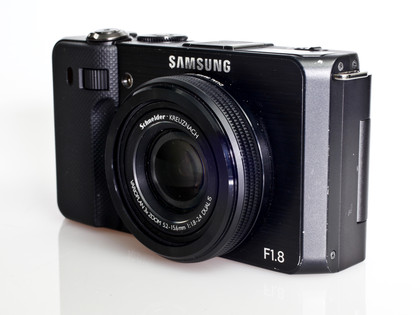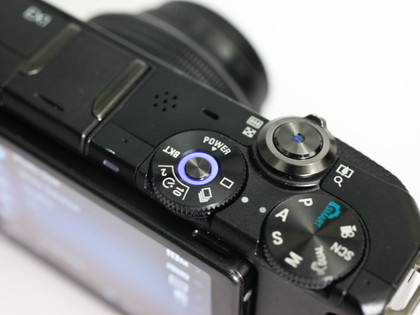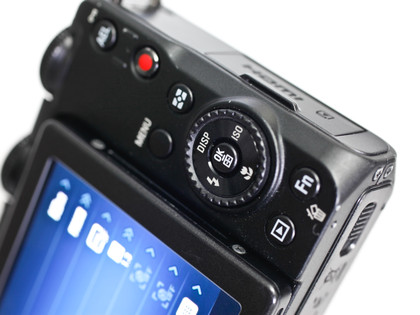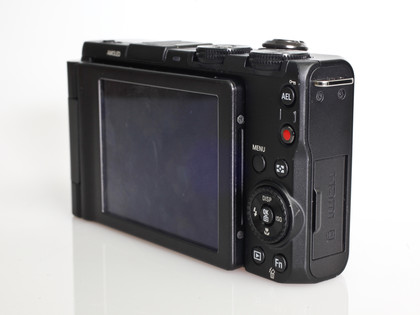Why you can trust TechRadar

A combination of high quality plastics and metal parts make up much of the Samsung EX1's construction. A brushed metal finish has been applied to the compact camera's front panel, which helps to give an overall impression of high quality with the finish. A sculpted rubber grip provides a comfortable hold, although the same finish on the rear on the thumb rest would be more comfortable to hold.
Full manual control is available and direct controls are provided, giving easy access to exposure controls.
A narrow dial located around the buttons on the rear adjusts aperture values, and the small click wheel inset into the rubber grip provides control of the shutter. Pressing the click wheel allows exposure compensation to be adjusted, without having to dive into menus. The dial on the rear can be a little awkward to operate, due to its narrow width, resulting in accidental button presses if not used with care.

A maximum shutter speed of half a second in aperture priority mode may be a little limiting for some photographers, but longer exposures up to 16 seconds can be selected in shutter priority and in full manual mode.
Two mode dials on the top of the camera provide quick access to the range of exposure programs and drive modes.
Continuous shooting (at a fairly pedestrian rate of just over 1.6fps), along with single shot and self timer modes can be selected via the drive mode dial. When continuous shooting is selected, the camera defaults back to superfine JPEG quality, because raw files can't be recorded in this mode.
On the rear of the camera the controls are well laid out, with a one-touch button for quick access to video recording.

The articulated 3-inch AMOLED screen is very clear and easy to compose images with, even in bright conditions. Having a resolution of 921,000 dots, pictures look sharp, with plenty of contrast.
Menus are clear and easy to read and logically laid out, which makes most settings on the Samsung EX1 easy to find.
The screen can be rotated through 270 degrees when flipped out to the side of the camera body, and can be closed away to protect the screen from damage.

A small flash unit is revealed by sliding a catch on top of the Samsung EX1. This low-powered unit is useful for fill in at close distances, and is raised up around 1cm above the camera when activated.
A standard ISO flash hotshoe with connections for TTL operation with a dedicated Samsung flash unit is provided. Although the hotshoe is a standard fitting, we couldn't get any of our manual flash units to fire during testing.
Autofocus is reasonably quick, and the bright maximum aperture of the lens aids fast focusing in low light conditions. An orange AF assistance lamp illuminates your subject in very dark conditions, and although this is very useful, the high intensity of the light can lead your subject squinting when taking portraits in dark conditions.
The Samsung EX1 is quite a responsive camera in use. Even though it can take around five seconds to write a raw plus superfine JPEG image to a Class 10 SD card, the camera is ready to take another shot almost instantly.
Delays are only encountered if you attempt to switch the camera off straight after taking an image.
